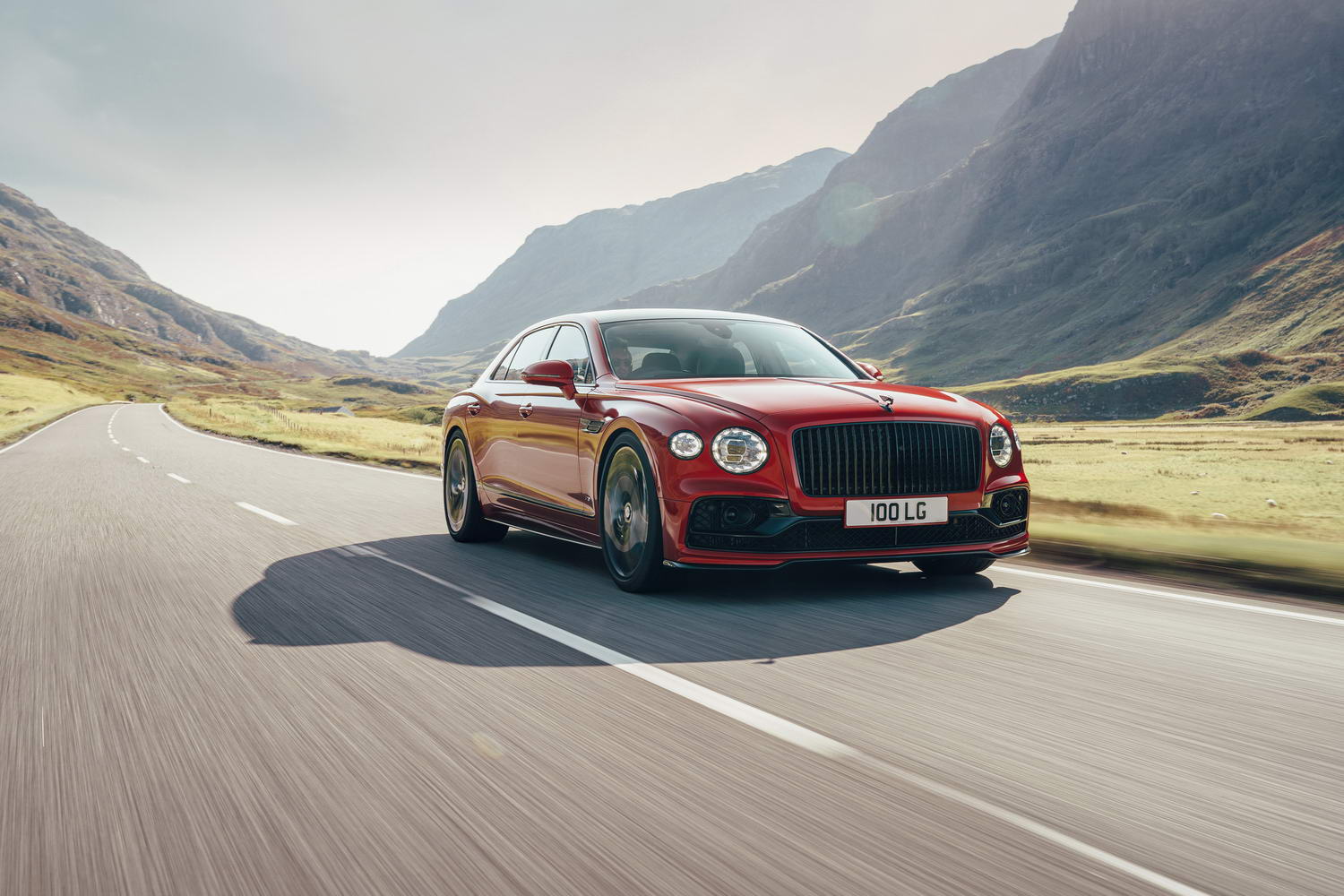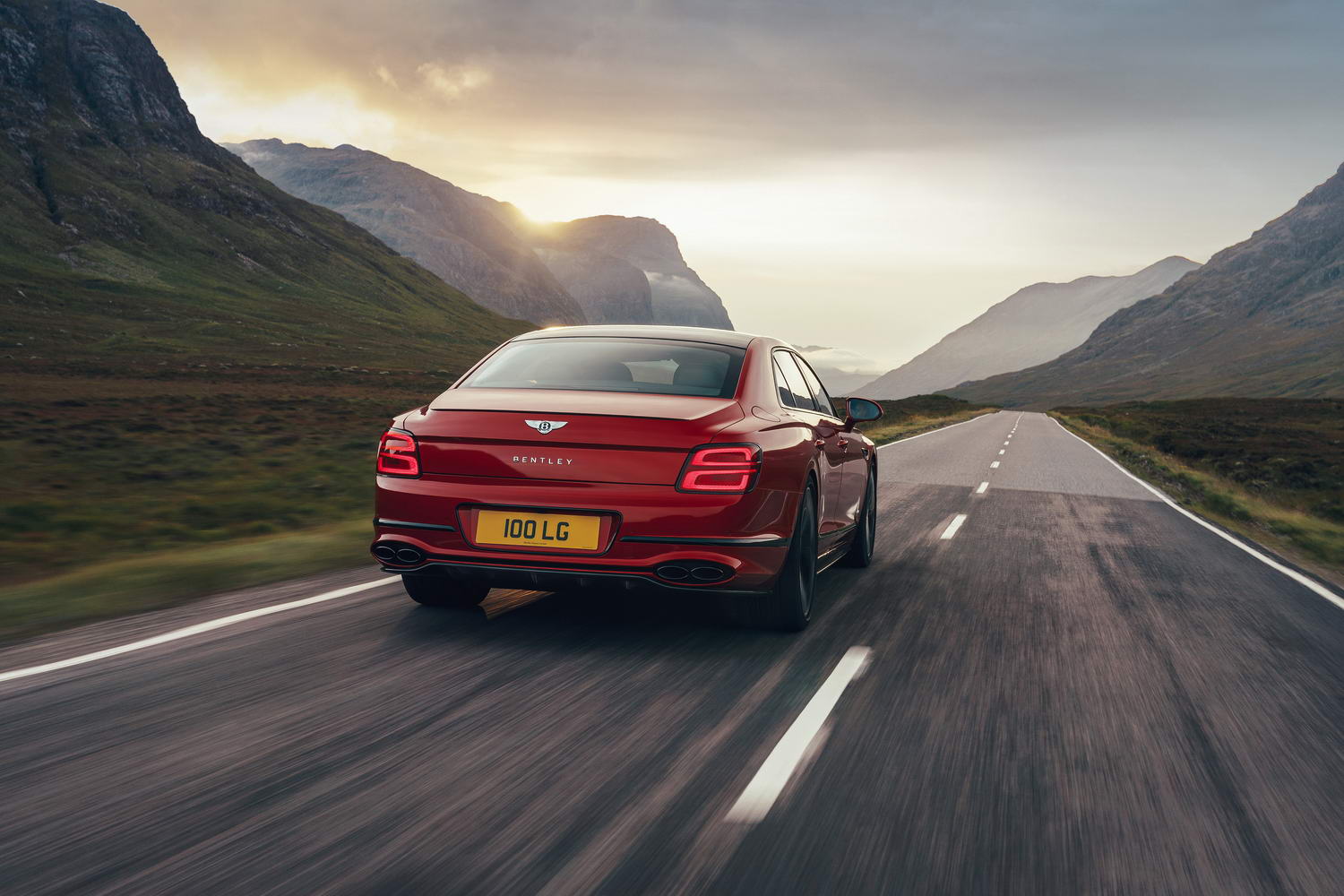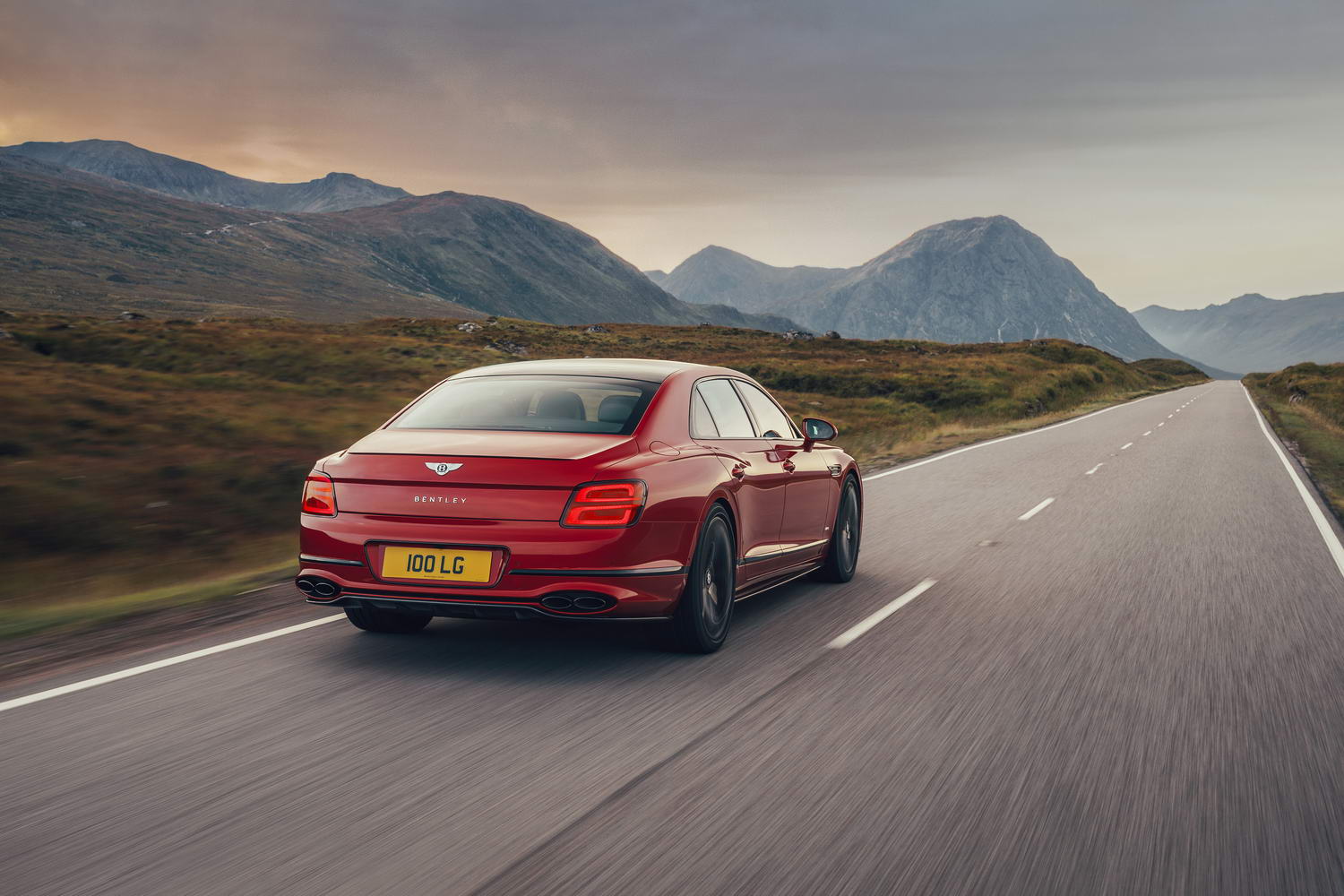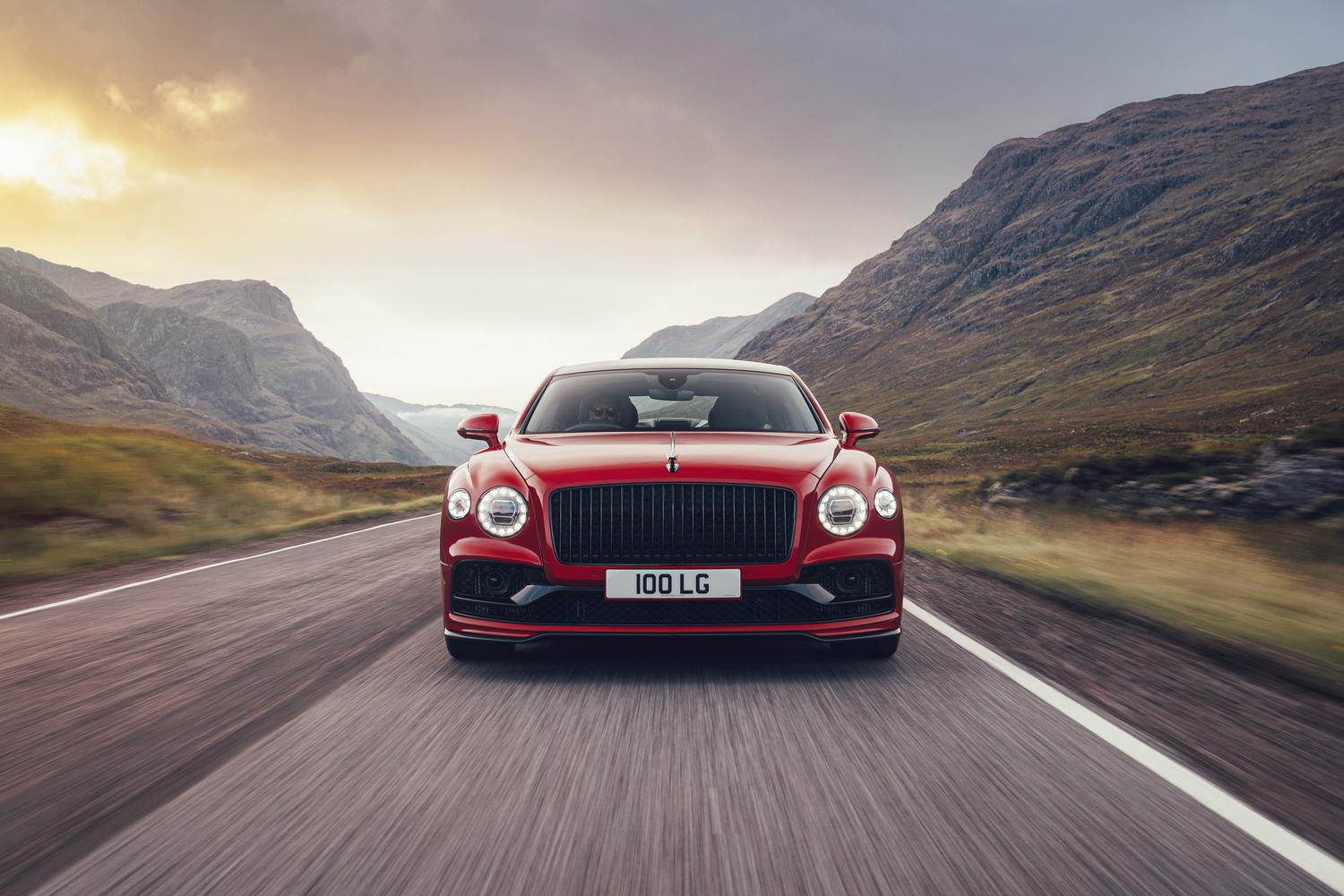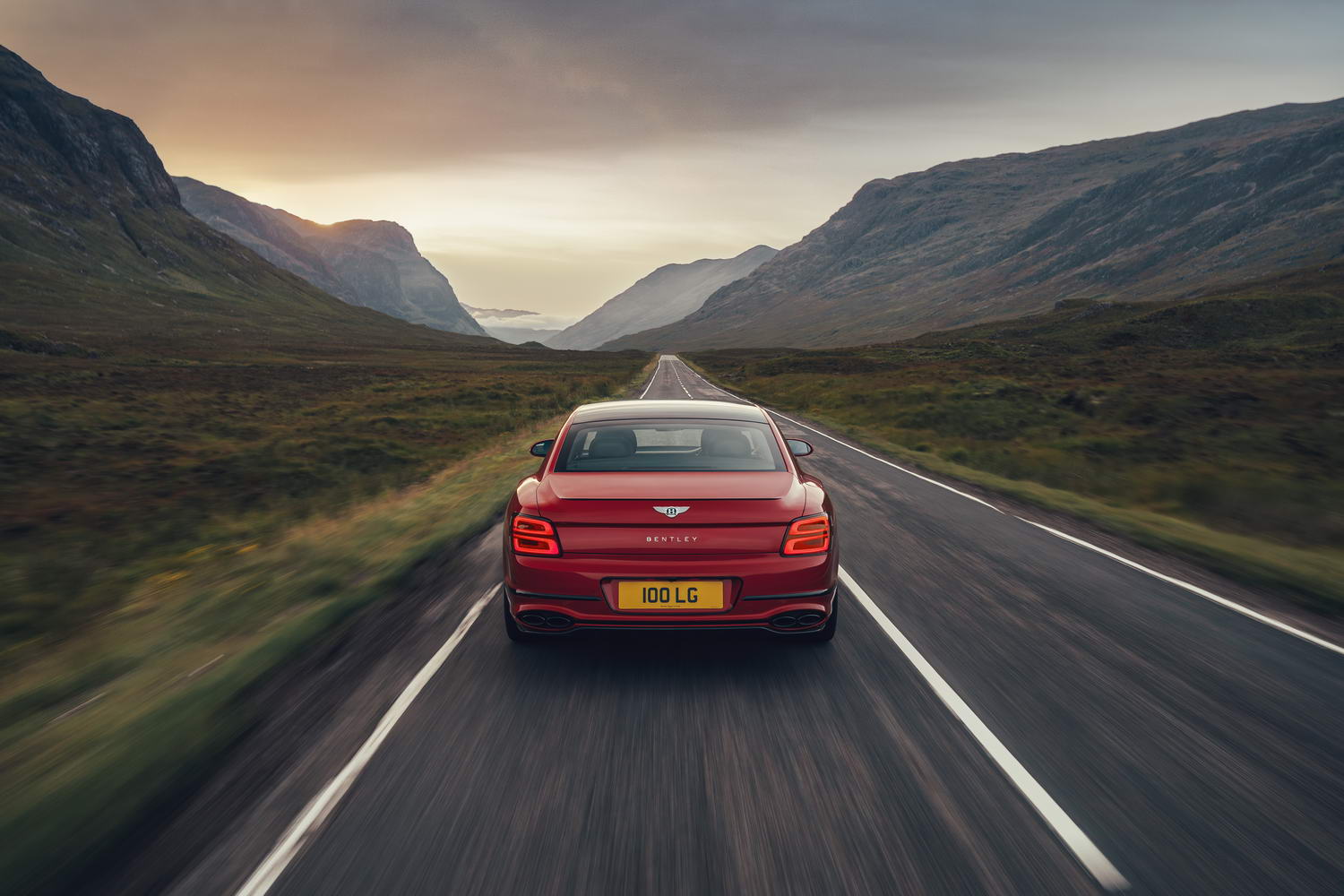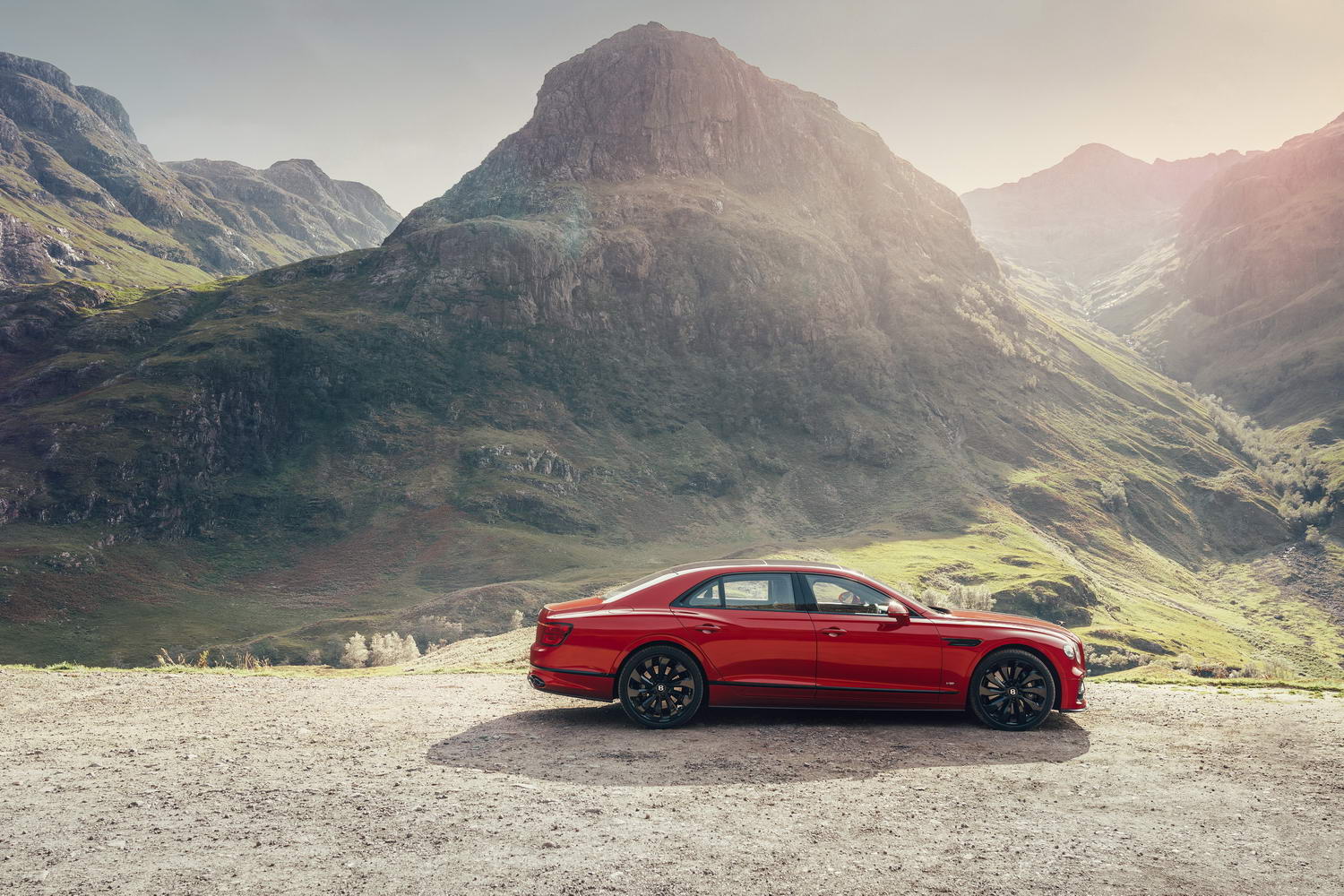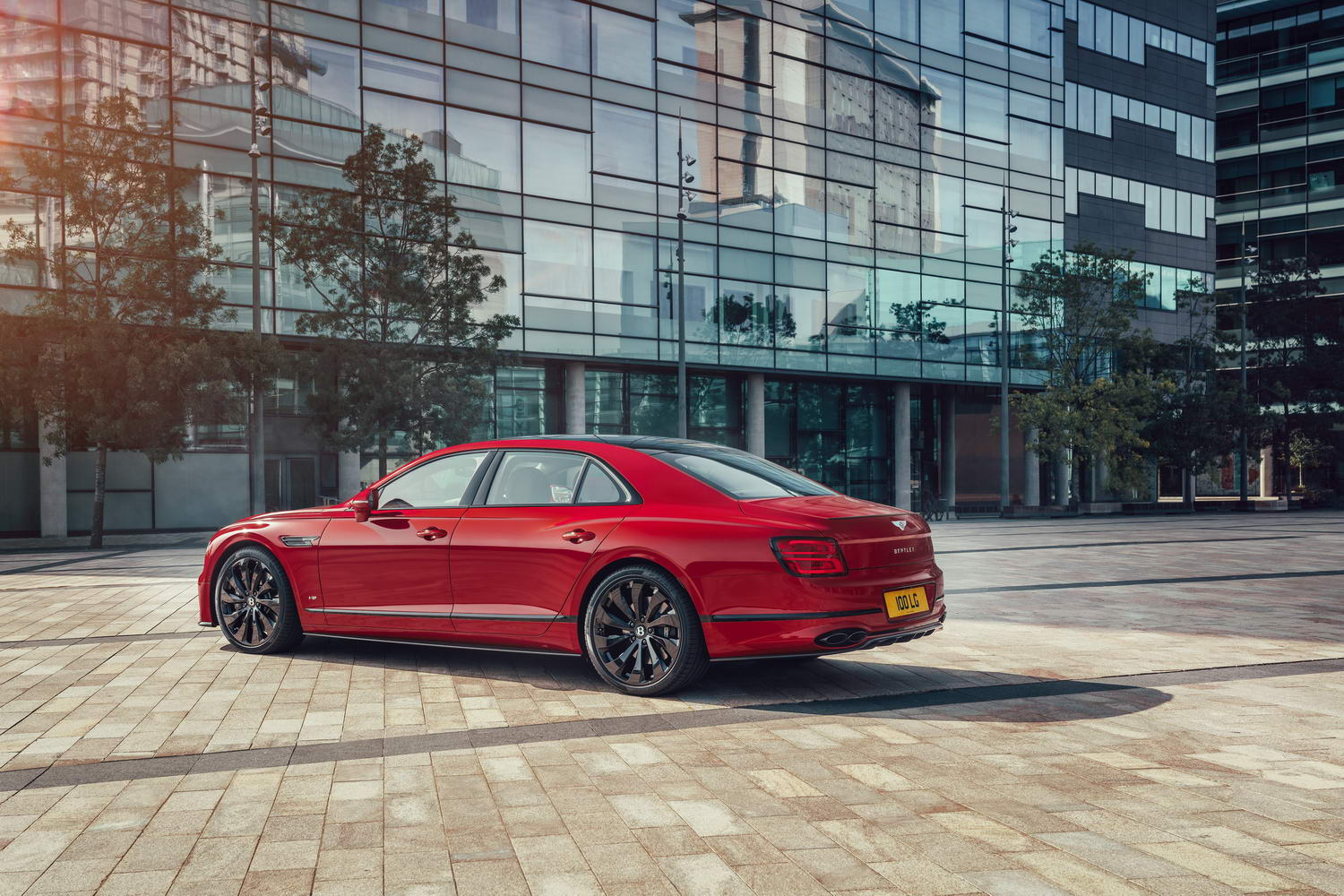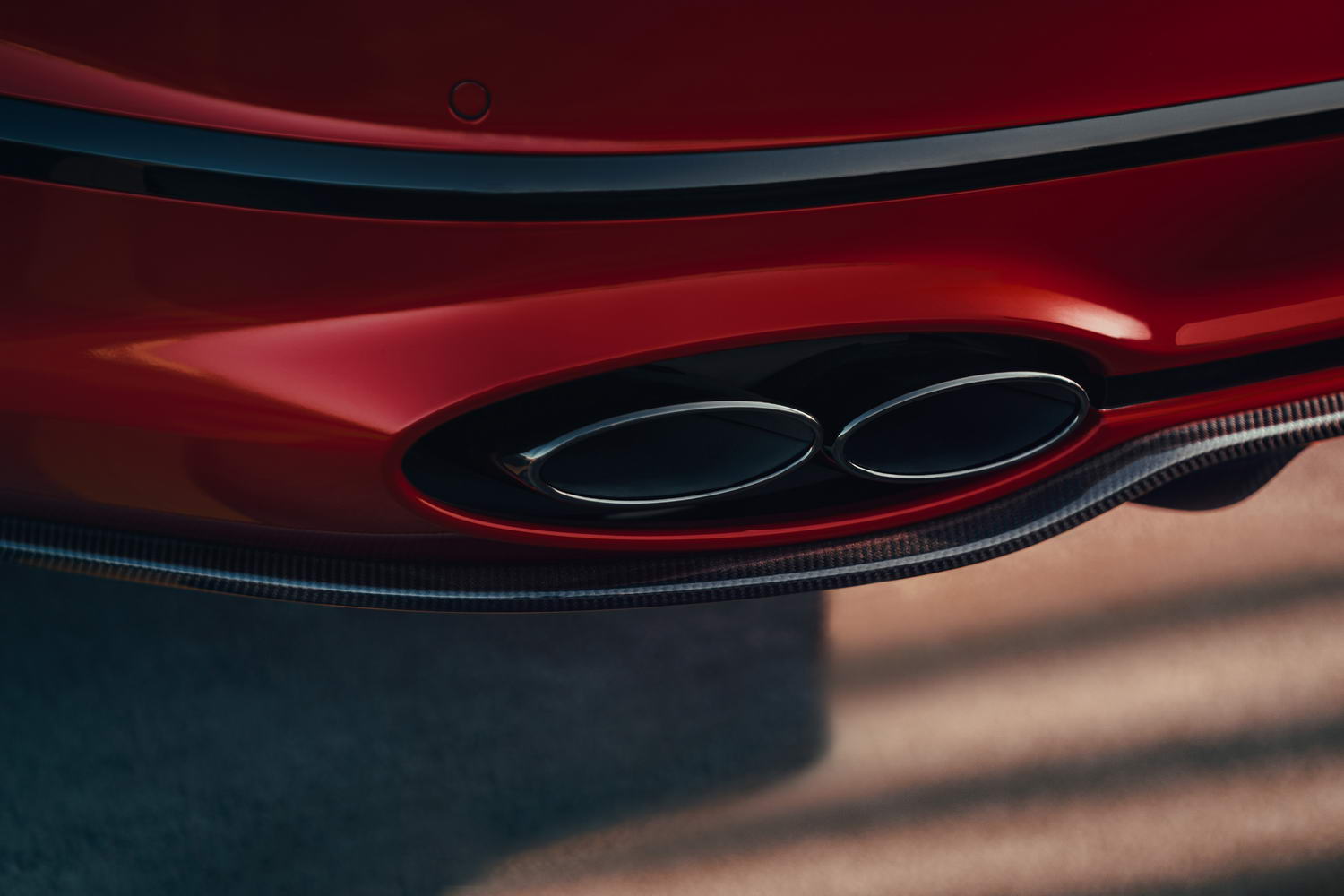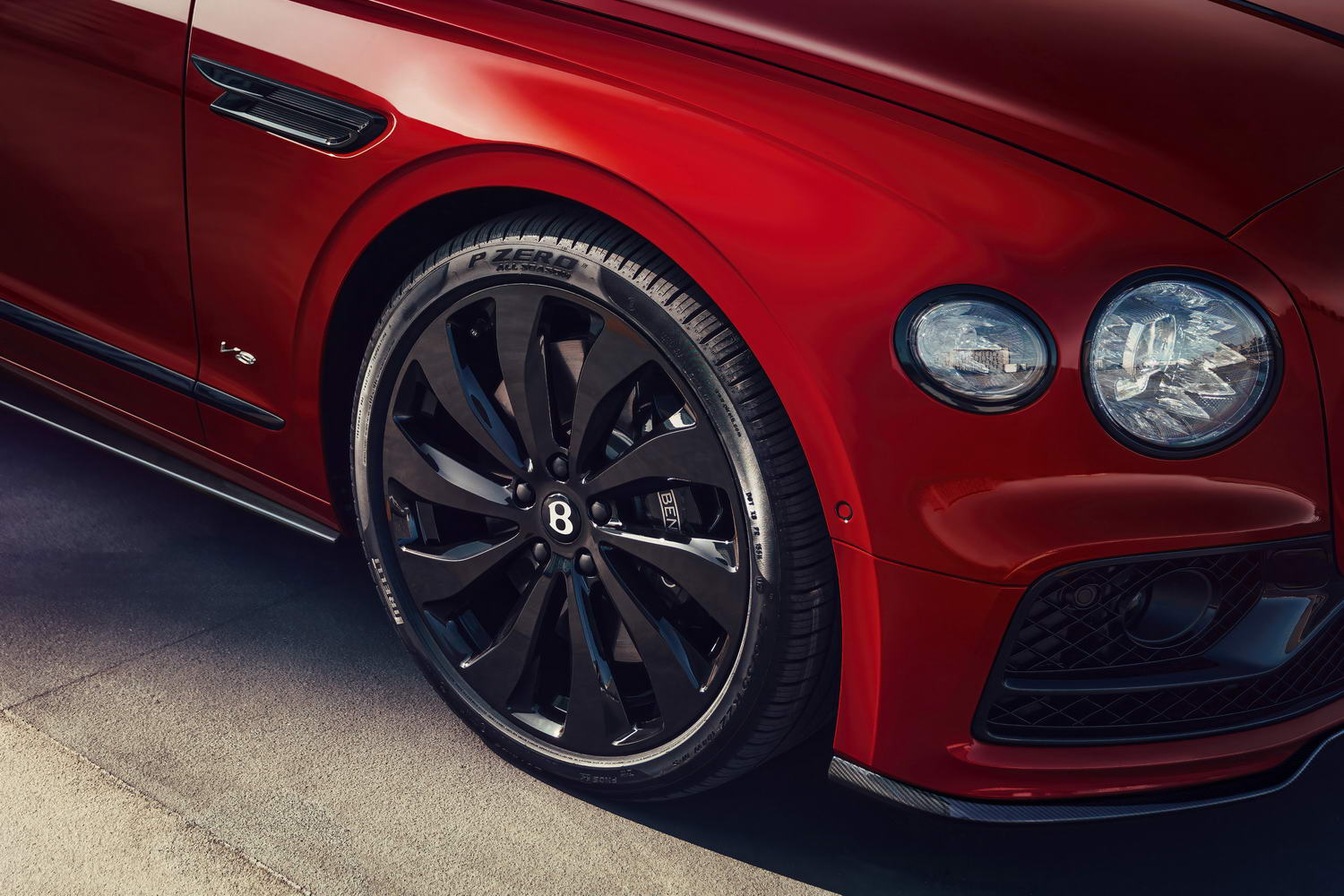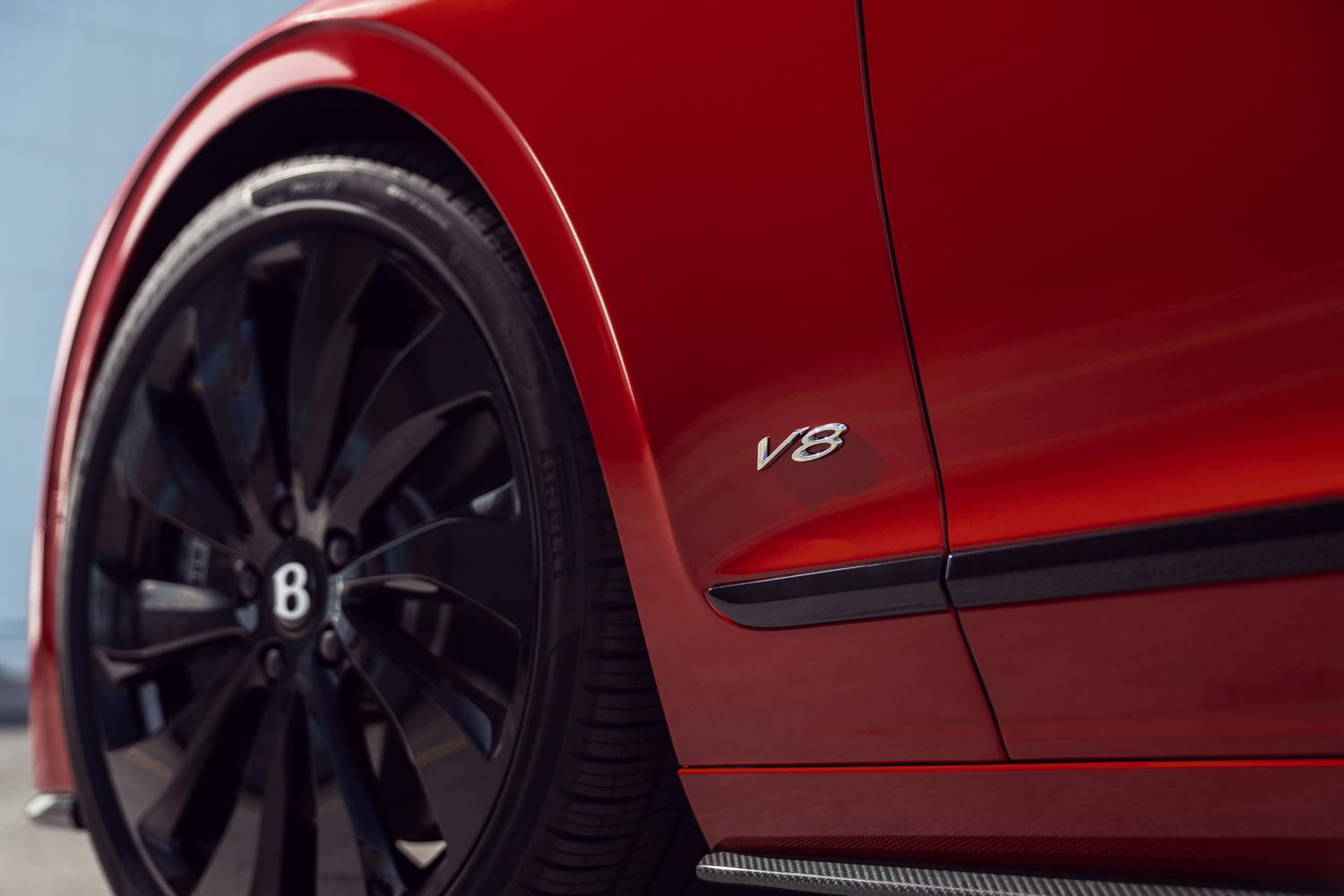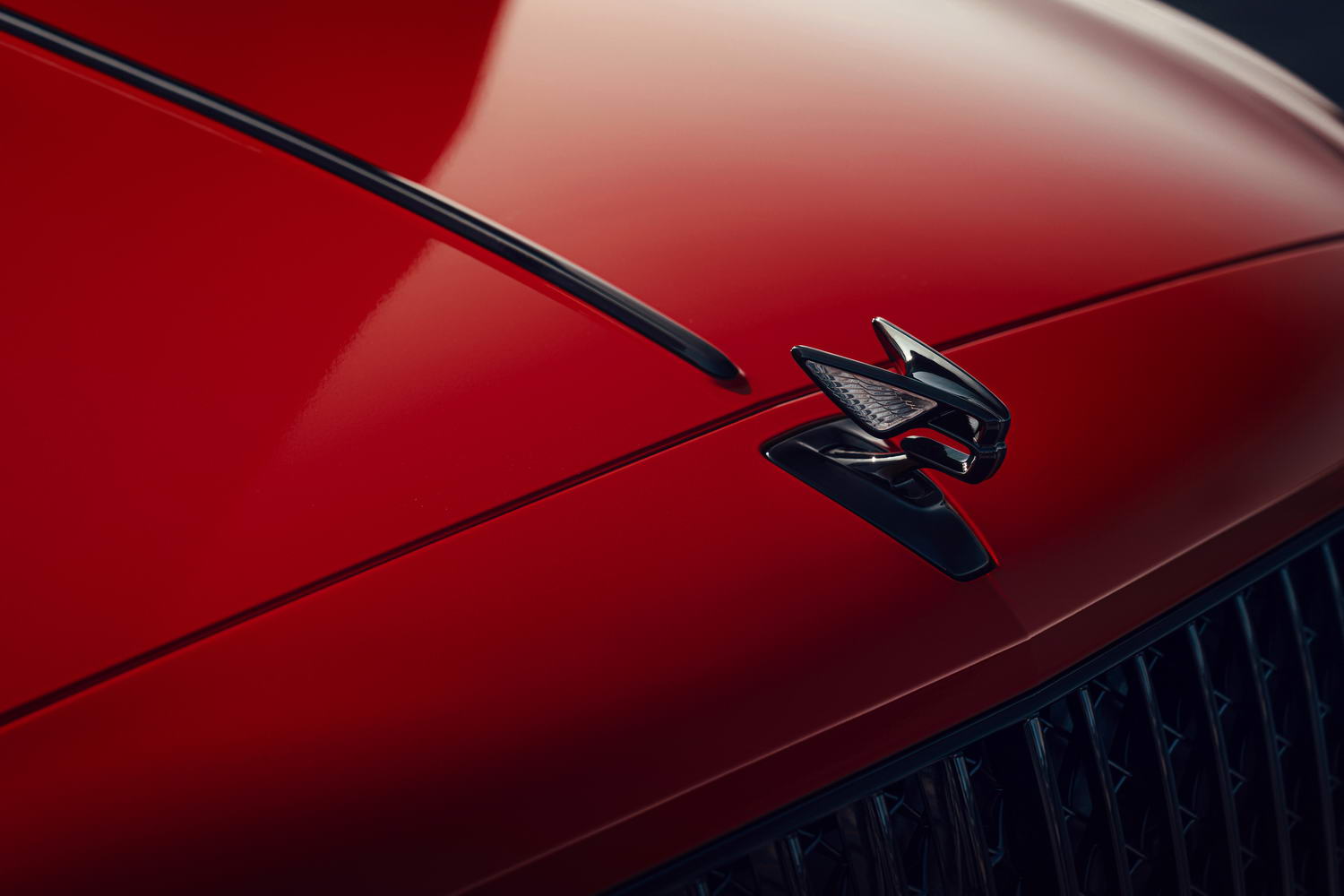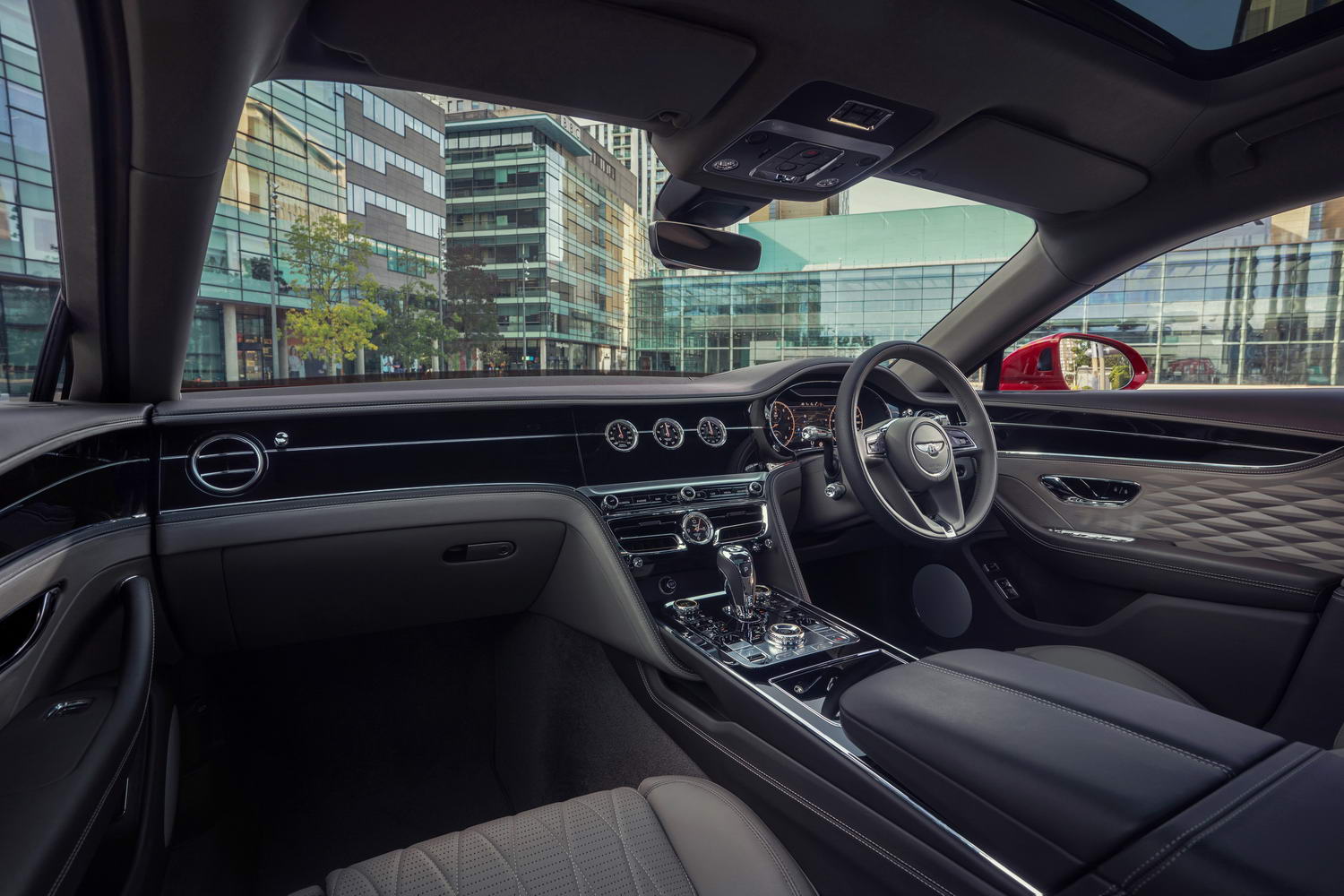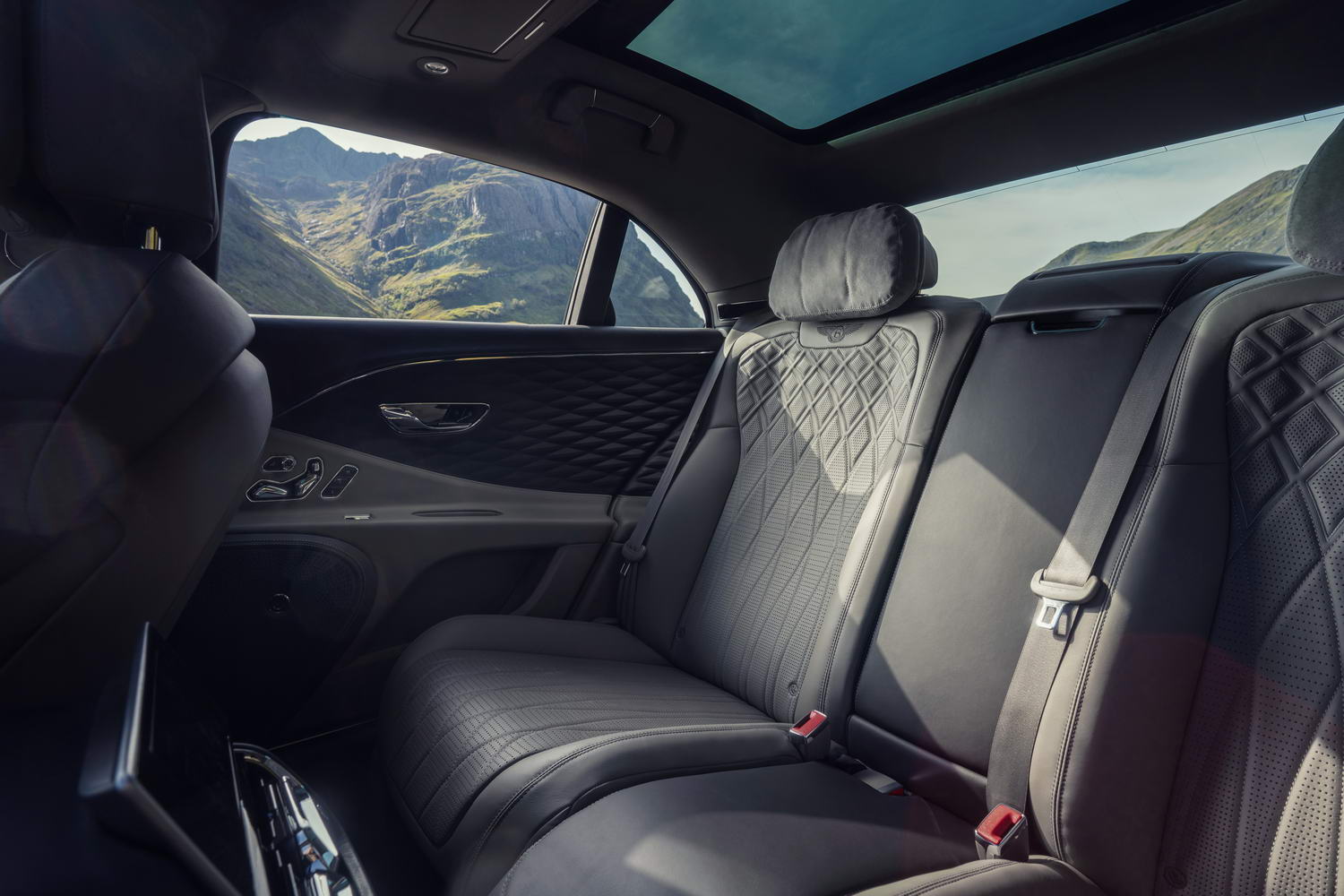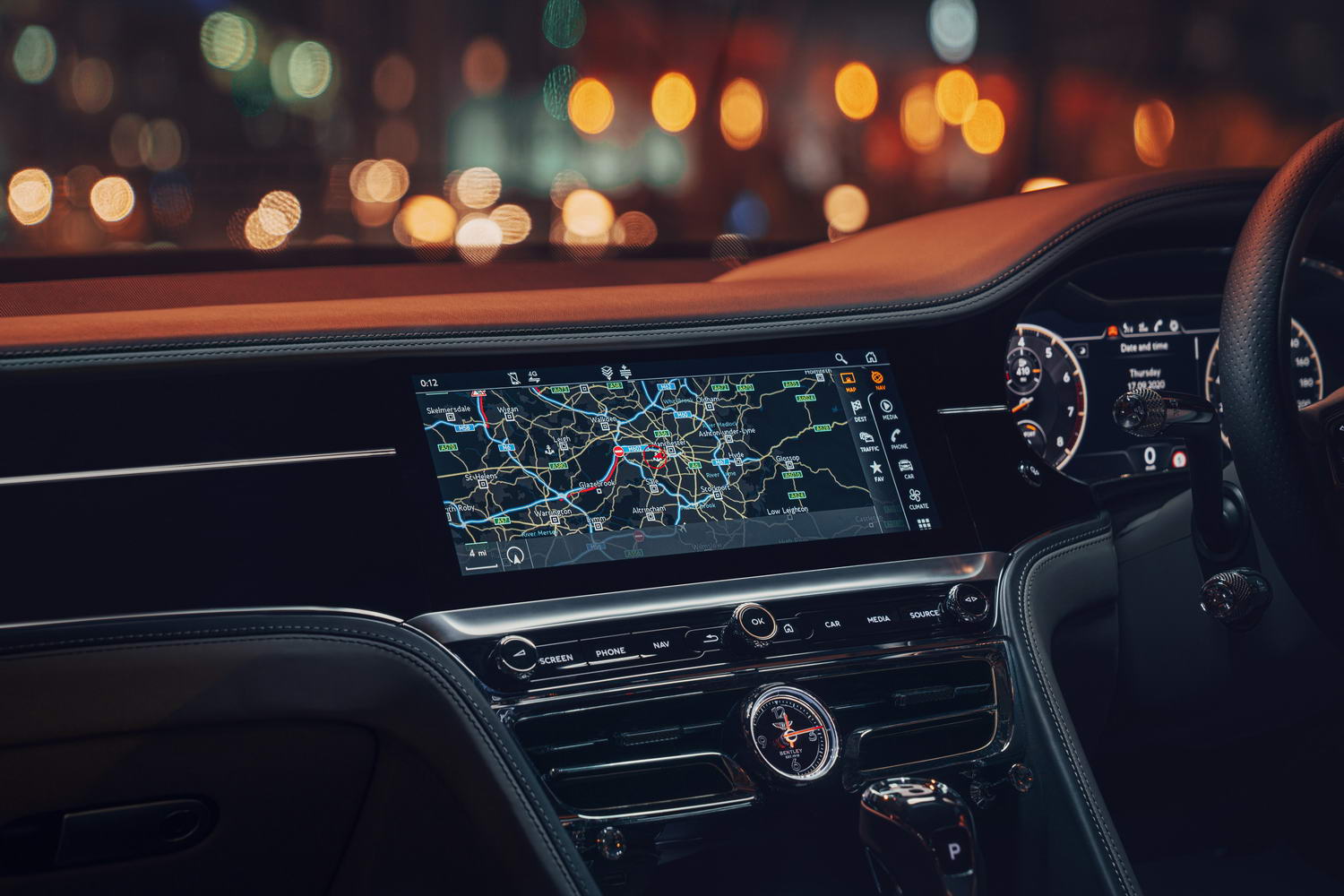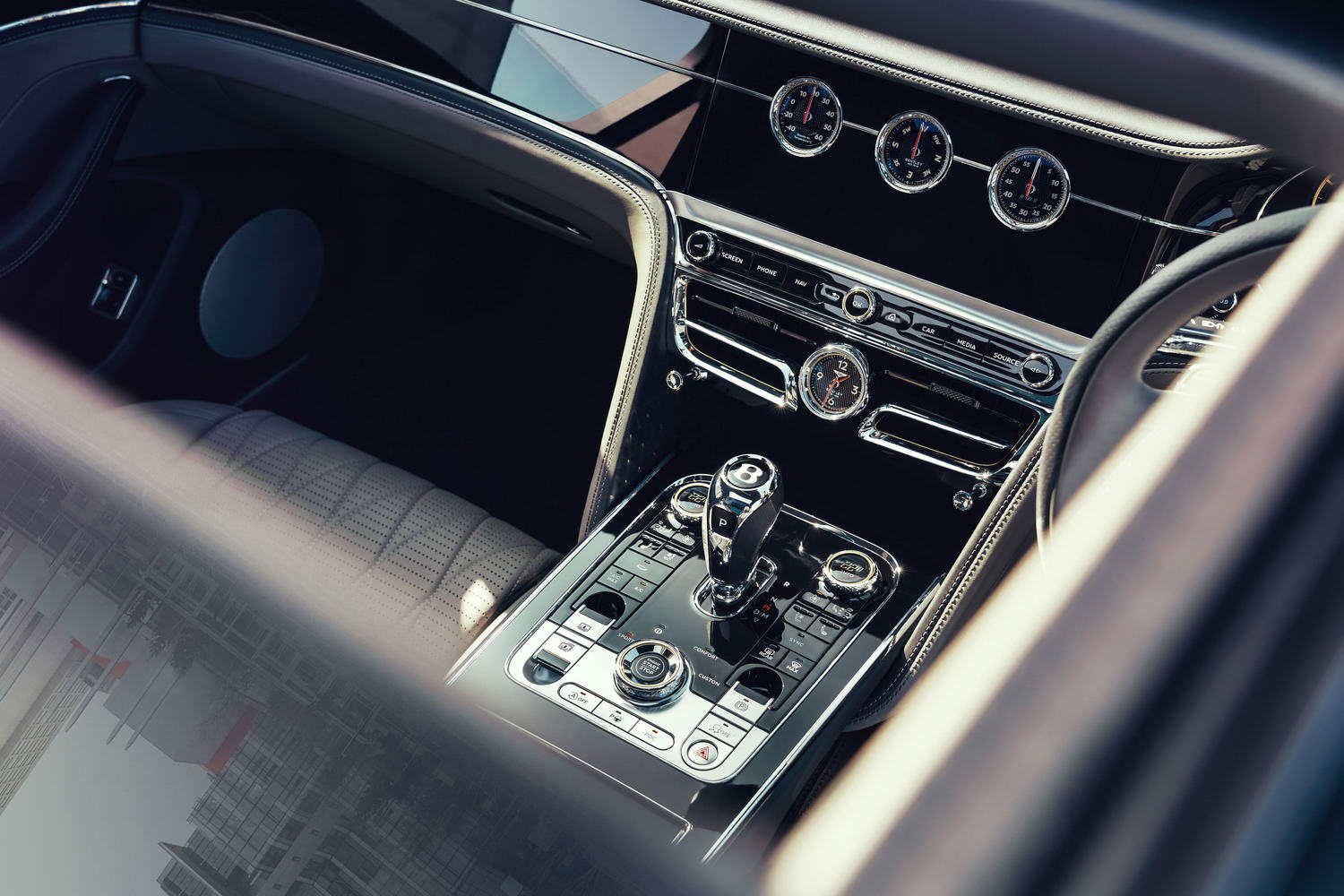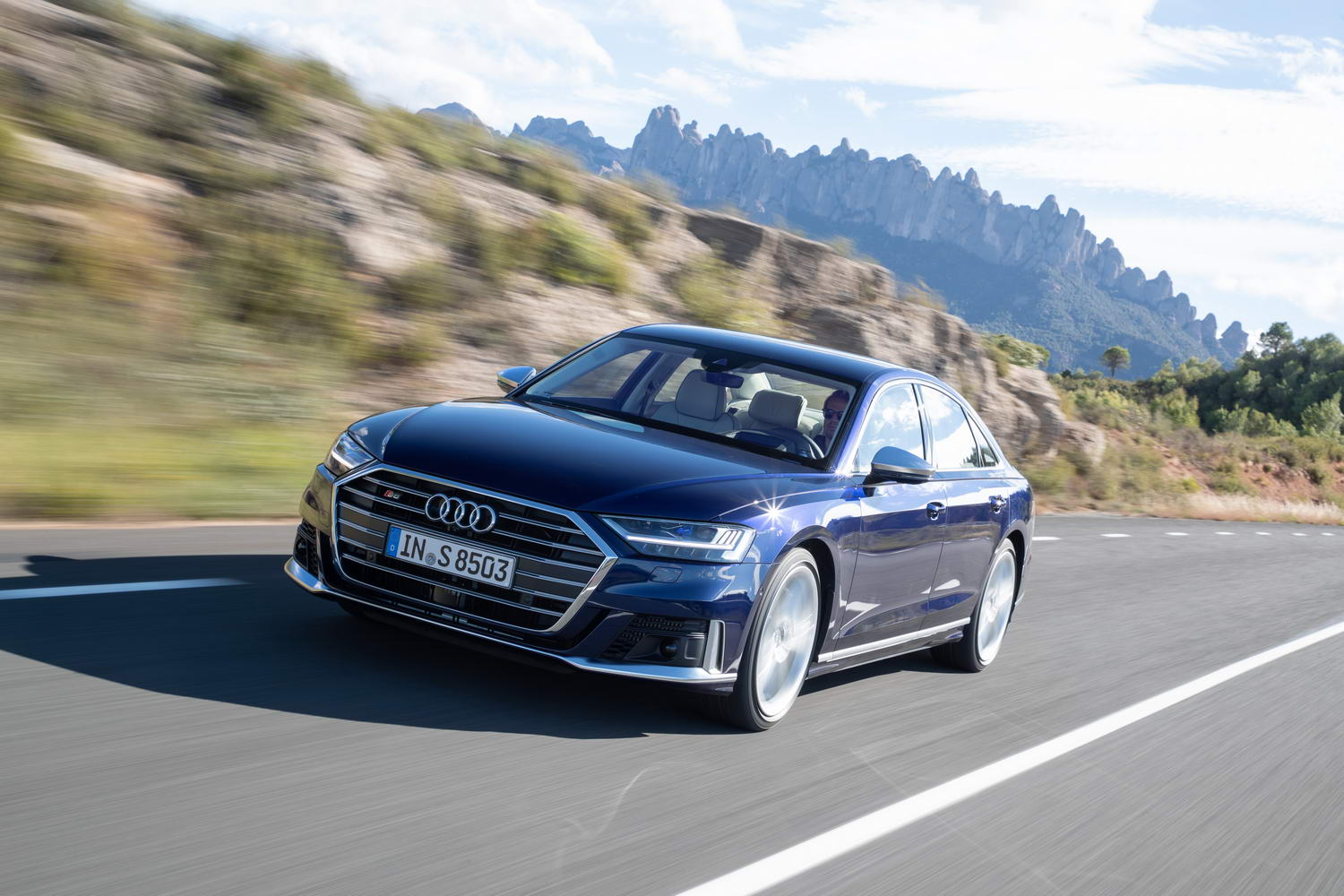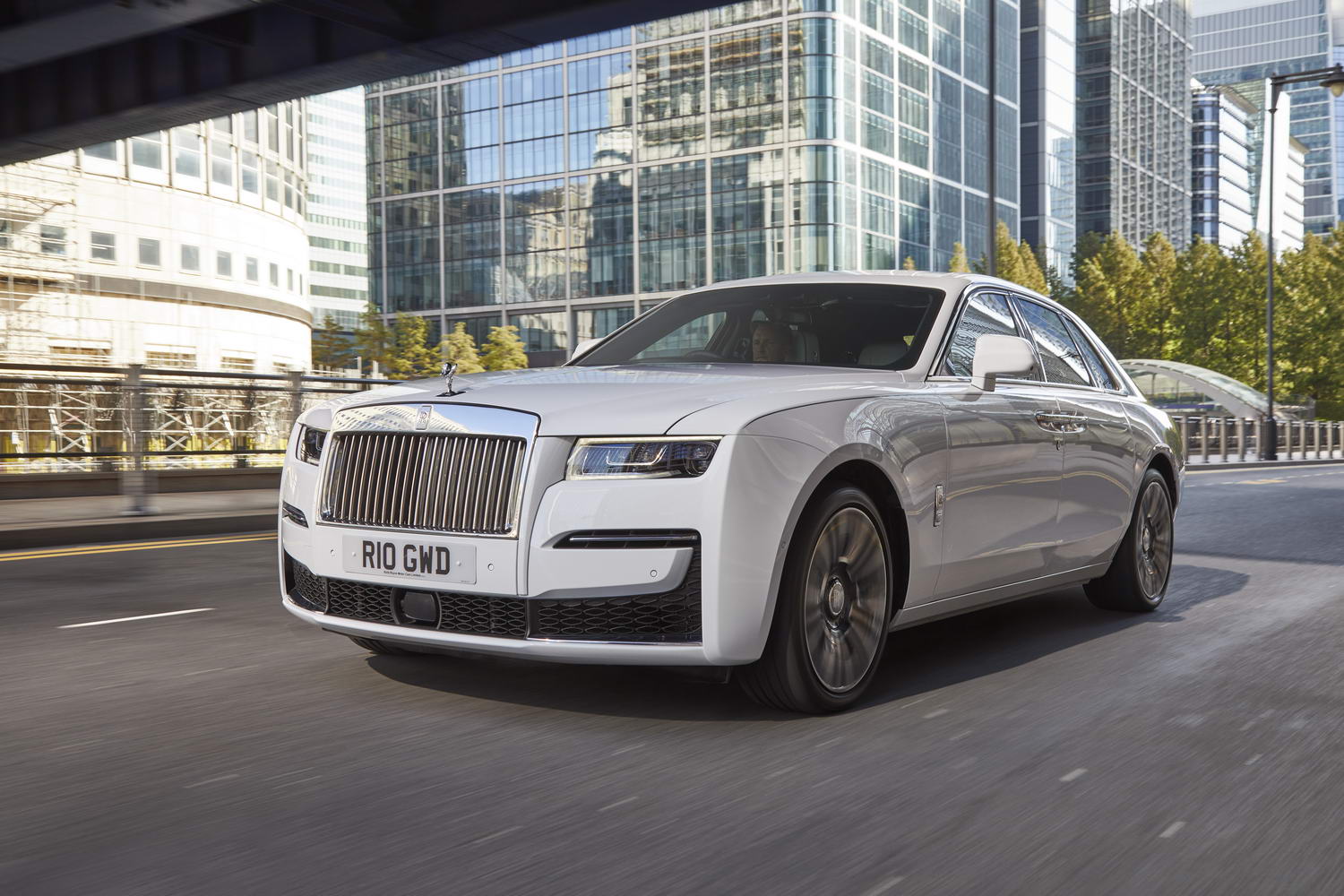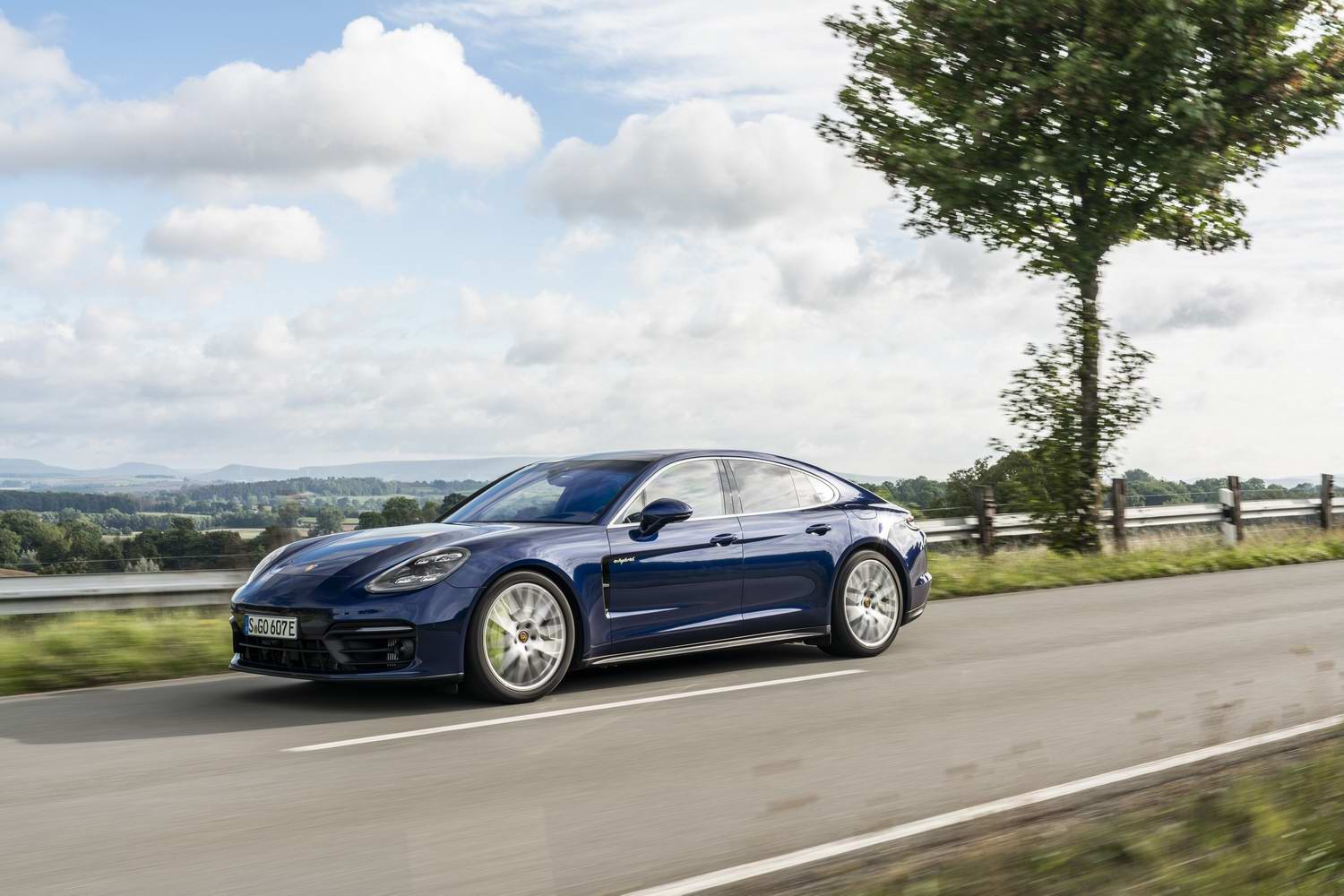Bentley expands its third-generation (well, speaking in modern-day terms) Flying Spur line with the addition of the, um, 'smaller' engine. It's a 4.0-litre twin-turbo V8 and, with it fitted, the Spur is no less jaw-droppingly, beguilingly marvellous than it is as a W12.
In the metal
We argued at its launch that the Flying Spur is not only easily the finest-looking four-door saloon that Bentley has put out in its Volkswagen-owned era, but it might well be the finest-looking thing in the marque's portfolio right now - yes, Continental family included. And the passage of a short amount of time has not disabused us of this notion. The V8 model has vaguely lemniscate exhausts, rather than the giant ovoid exits of the 12-cylinder Spur, and it also wears discreet 'V8' badges low down on the front wings - although we're sure you could pay Bentley to have these removed, if you so wished. Nevertheless, from the outside, the Flying Spur V8 looks thoroughly wonderful and it's the same story within, too, where you will not find a single iota less grandiosity from the standards of the fixtures and fittings of the 4.0-litre car when compared to the 6.0-litre Bentley. In short, inside and out, this four-door saloon looks and feels worth every single cent of its exorbitant asking price.
Driving it
Bentley has history when it comes to this particular product strategy of, er, 'downsizing'. It always prefers to launch one of the all-new models with its calling-card 6.0-litre W12 engine, before adding any V8 derivatives to the mix afterwards. And, true to form, the Flying Spur V8 follows very recent introductions of the same powerplant to the Continental GT and the Bentayga SUV lines.
In both of those instances, we are happy to go on the record as saying the V8 models instantly become the ones to have. In the case of the Continental, the reasons for this are two-fold: namely, it puts less weight over the nose of the car (around 100kg), and it improves the soundtrack, as the W12 is a mighty unit but not one possessed of a particularly memorable voice. This is particularly true of the GTC convertible variant. So if you're buying a Continental, buy a V8.
As for the Bentayga, the case might not look so clear-cut. It's not as if the Continental is a light car by any stretch of the imagination, but in its third-generation Coupe format its dynamics have improved remarkably over its forebears' manners in the corners, all without sacrificing any of the refinement for which Bentley is renowned. And so the V8 only enhances the spryness of the current sports-car models of the Bentley portfolio. Conversely, with the Bentayga, you're not particularly talking about some doyen of handling in SUV form. It's incredibly good, but the switch between V8 and W12 doesn't make an appreciable difference to the way it tackles sweeping curves and sinuous roads. With the Bentayga, the reason for preferring the V8 feels a purely subjective one - it's as if that was the engine the SUV was always made for. So, Bentayga buyers, it's the same advice for you: choose the V8.
With the Flying Spur, however, we're finding ourselves much more torn. Judged entirely rationally, the V8 again makes the stronger defence for itself. It's cheaper, or should we say, 'marginally less stonkingly expensive', to buy. It genuinely does sound better, giving the Spur a rasping exhaust note to overlay the pleasing eight-cylinder snarl that permeates the cabin when the 550hp engine is working hard. Furthermore, Bentley promises that the V8 Spur will go up to 650km on a single tank of fuel, partly because the V8 can run on four cylinders if it's operating at less than 3,500rpm and you're not asking a lot of it, and we certainly found these eco-claims to be true - on a steady motorway cruise, the Flying Spur achieved a highly creditable 28.6mpg (9.9 litres/100km). That's outrageously good for a petrol-powered, 2,337kg machine like this. And yes, the V8 is 100kg lighter overall than the W12 Spur, which makes it a touch more agile when you need it to be.
As it is also based on the same platform as the Porsche Panamera, you'd therefore think that anything that sharpens the handling is going to make the V8 indubitably the Flying Spur to have. A clean sweep of the Bentley model board for the 4.0-litre engine, so to speak. Therefore... it comes as something of a surprise to us, and not just you, when we say we're not sure if we'd have the V8 rather than the W12 when specifying this exceptional four-door.
It's agonisingly fine margins separating them, you see, and adding to that, trying to argue the tenet of 'but you could save €30,000 by purchasing the V8 instead of the W12' is obviously laughably irrelevant when you're talking about the sort of clientele that can actually afford to buy one of these things. Thirty grand is neither here nor there, quite frankly. So the cost thing (see 'What you get for your money', below) is something we have to report on, but we don't think it actually swings the pendulum definitively in the direction of one engine or the other when it comes to the Spur.
The noise of the V8 is a tick in its 'Pros' column, sure, but then the remorseless savagery of the W12's acceleration does make a difference here. Admittedly, we're talking about the way the cars continue to pile on pace beyond 100km/h, so you soon get into the semantic mire of trying to recommend a vehicle to people on the basis of to what extent it will let you smash the driving laws to smithereens. However, the W12 is just gut-wrenchingly relentless in the midrange. The V8 is of course astonishingly strong too, as 770Nm is a figure not to be sniffed at, but you feel the 4.0-litre engine is just working that bit harder, it's exerting itself with just a degree more of strain than the way the 6.0-litre shoves around 2.45 tonnes of mass. Again, it's a subtle distinction and one that is utterly arbitrary in any country with a 120km/h limit, but we have to cite it in the battle of the Flying Spurs.
We guess what we're waffling around trying to say here is that it's a gut-feel thing. Put us on the spot and ask for an immediate call on V8 or W12 in a Continental GT or Bentayga, and we wouldn't hesitate to reply 'V8, all the way'. Pose the same quandary of us with regards a Flying Spur, however, and we're much more likely to pull an agonised face, procrastinate with a load of 'ummms' and 'aaahs' for as long as we can, and then subtly divert your attention to a tray of canapés that's travelling round the room to our location, only to leg it off in the direction of the drinks while you're looking at a scrumptious prawn vol-au-vent heading your way. Bentley's engineering prowess with the Flying Spur has made it so we simply cannot choose between one powertrain and the other.
What you get for your money
You get 99.9999999 per cent of the Flying Spur W12 experience, but for 90 per cent of the price. So, to us and our feeble minds, which have been warped beyond all comprehension by trying to combat the corrupting influence of discussing relative value on quarter-of-a-million-Euro-plus cars, we think that makes the Spur V8 something of a bargain. Yes, bargain. Hence why we've given it a slightly higher mark here than we did for its 6.0-litre sibling last time out. Saying all that, good luck importing one from England and working out the costs involved now that Brexit can mean import duty and more VAT. If you're one of the lucky few that are still considering such folly, best give Charles Hurst Bentley in Belfast a call.
Summary
Trying to decide whether a Bentley Flying Spur V8 is a superior or inferior car to a Bentley Flying Spur W12 in the current economic climate is probably a bit like Marie Antoinette trying to choose between offering a madeleine or a brioche to a starving peasant desperate for bread (all right, all right - we know she wasn't the one who originally said, 'let them eat cake', OK?!). Frankly, choose either of these majestic engines to install in the front of the Flying Spur and you'll end up with a sensational, hyper-luxury saloon that beats pretty much anything else you'd care to put in front of it. Logically, the V8 is marginally the better bet. Emotionally, we think we'd probably stick with a W12 in this case. Overall, and irrespective of its form of propulsion, the third-gen Flying Spur is just staggeringly outstanding in every regard.

